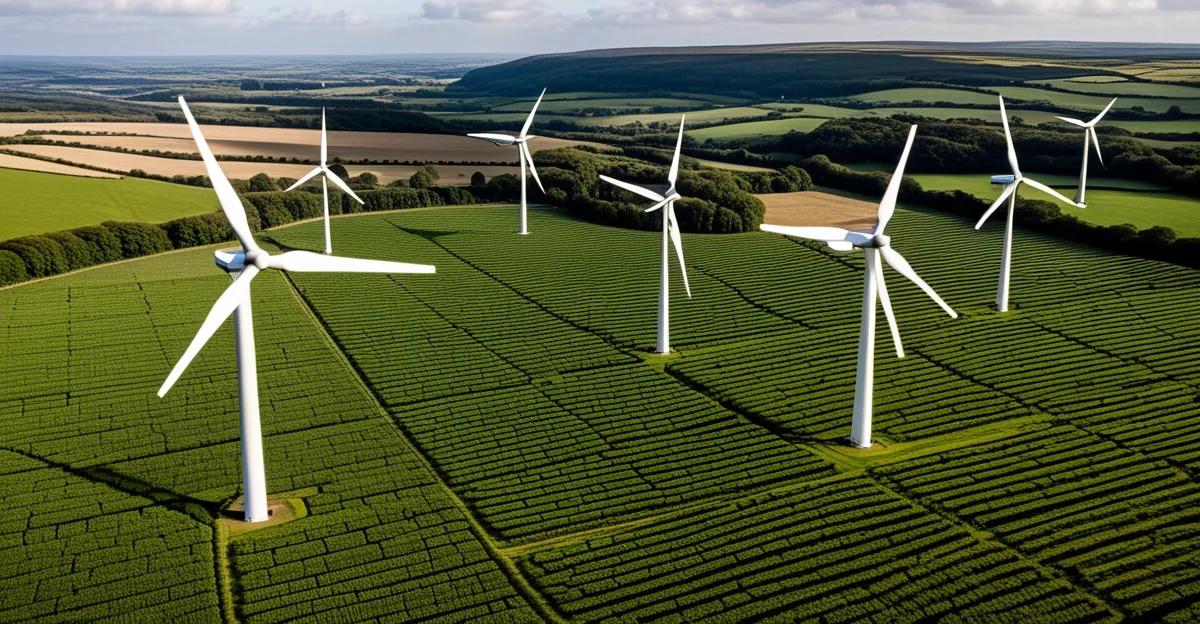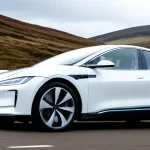Technological Advancements Driving UK Renewable Energy
The UK renewable energy technology sector is rapidly evolving, with several key technologies reshaping the energy landscape. Wind power remains a dominant force, with offshore wind farms utilizing larger, more efficient turbines to maximize output. Solar energy technology has also advanced, with improved photovoltaic panel efficiency and innovations in solar tracking systems enhancing renewable energy production.
Smart grids represent another significant technological advancement. These grids incorporate digital innovation and data analytics to optimize energy distribution and balance supply and demand effectively. This integration reduces waste and manages the variability inherent in renewable sources, directly addressing intermittency challenges.
Also read : How Can UK Technology Foster Sustainable Innovation?
Energy storage technologies, especially advanced battery systems, have become crucial. They store excess energy generated during peak production times and release it when demand rises or renewable input dips. This technology enhances grid stability and reliability.
Recent UK statistics highlight a robust upward trend in renewable output, driven largely by these technologies. The simultaneous development of wind, solar, smart grids, and storage solutions shows how multifaceted technological progress is essential to expanding and stabilizing renewable energy production across the UK. These advancements collectively push the UK closer to its sustainability goals while ensuring energy security and efficiency.
Also to see : How is the Role of Artificial Intelligence in UK Technology Evolving?
Government Initiatives Catalysing Technological Adoption
Government involvement is pivotal in accelerating UK renewable energy technology adoption. Through evolving UK energy policy, policymakers have crafted frameworks that actively encourage renewable energy innovation. These policies offer financial incentives including grants, tax reliefs, and subsidies, reducing upfront costs and stimulating investment in cutting-edge technologies.
Regulatory frameworks ensure clear guidelines and stable conditions for developers and investors. This stability fosters long-term planning and supports the deployment of technologies like offshore wind farms and advanced battery storage. By integrating environmental standards with market mechanisms, the government aligns economic growth with sustainability goals, propelling the sector forward.
Partnerships between government bodies, academia, and industry constitute another strategic approach. Collaborative research projects and pilot programs leverage academic expertise and industry know-how, enabling rapid development and testing of new technologies. These alliances also facilitate skills transfer and workforce development, ensuring the sector remains competitive.
Collectively, these government initiatives do more than promote renewable energy production; they create a resilient ecosystem enabling continued technological progress. This synergy between public policy and innovation is key to meeting the UK’s ambitious clean energy targets efficiently and sustainably.
Real-World Applications and Projects in the UK
The UK renewable energy projects exemplify practical success in deploying UK renewable energy technology at scale. Offshore wind farms like Hornsea One harness cutting-edge turbine design to deliver record-breaking output, a testament to ongoing technological advancements driving renewable energy production. Solar parks across southern England utilize panels with improved photovoltaic efficiency, demonstrating tangible benefits from innovation in solar tech.
Smart grid implementation is gaining momentum nationally, integrating digital monitoring and automated controls to optimize energy flow. These grids enable demand-response measures, reducing waste and accommodating fluctuating renewable inputs. Paired with advanced battery storage solutions, smart grids enhance grid resilience and ensure steady power delivery.
Case studies reveal how this synergy of smart infrastructure and generation technology tackles intermittency and transmission losses, common obstacles in renewables. Industry experts emphasize that ongoing collaboration between technology developers and utility operators accelerates deployment and fine-tunes performance.
In summary, these UK renewable energy projects not only showcase the viability of advanced technologies but also offer blueprints for scaling sustainable energy infrastructure. Their success highlights the importance of combining innovation, operational expertise, and supportive policies to transform the UK energy landscape effectively.
Overcoming Challenges Through Technology
Addressing intermittency and grid integration issues
The renewable energy challenges UK faces primarily hinge on intermittency, grid integration, and storage limitations. Intermittency—the irregular availability of wind and solar power—creates variability that complicates balancing supply with demand. To address this, technological advancements in smart grids enable dynamic energy management, adjusting flows in real time based on supply fluctuations.
Another major challenge is integrating renewable sources into the existing grid infrastructure, which was originally designed for centralized, consistent power generation. Advanced grid integration technologies, such as automated controls and predictive analytics, help smooth transitions and maintain stability. These solutions optimize energy dispatch and improve grid resilience.
Energy storage limitations have historically restricted the volume of renewables that can be reliably incorporated. However, recent innovations in battery technology, including higher capacity and longer lifespan, allow excess energy to be stored during peak production and dispatched during demand surges.
Lessons from past setbacks underscore the importance of combining diverse approaches—smart grids, storage, and generation innovation—to overcome barriers. This integrated strategy not only mitigates current renewable energy challenges UK encounters but also strengthens the foundation for scalable, efficient renewable energy production.
Future Prospects for Technology in UK Renewable Energy
Exploring upcoming innovations and their potential
The future of UK renewable energy hinges on continued renewable energy innovation and emerging UK renewable energy technology. Innovations like green hydrogen production are gaining traction as complementary solutions to wind and solar, enabling decarbonisation of sectors beyond electricity, including transport and industry. This diversification advances the broader energy transition.
Emerging technologies also include next-generation battery chemistries, such as solid-state batteries, promising higher energy density and improved safety. These advancements will enhance storage capacity, crucial for balancing supply amidst renewable intermittency.
Experts project that digital tools, incorporating artificial intelligence and machine learning, will play an increasing role in optimizing renewable output and grid management. Such technologies enable predictive maintenance and efficient resource allocation, boosting overall efficiency.
In summary, the future of UK renewable energy is shaped by a blend of enhanced energy generation, advanced storage solutions, and intelligent digital systems. This vibrant innovation ecosystem is vital for meeting the UK’s ambitious net zero and decarbonisation targets. Staying informed and adaptable to these technological shifts is key for stakeholders committed to a sustainable energy future.






